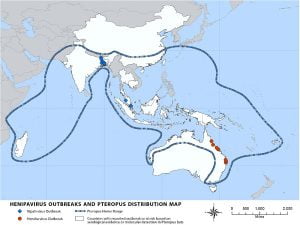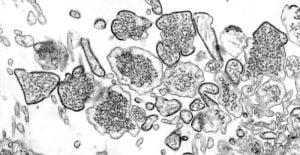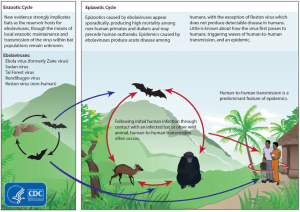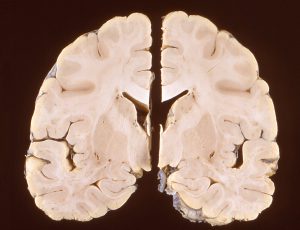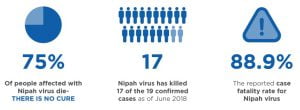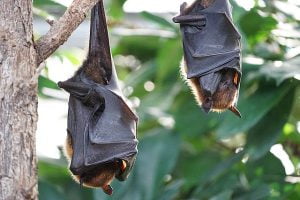Browsing: Nipah virus infection Graphics
Comprehensive Information, Resources, and Support on Nipah Virus Infection
According to CDC, these are the countries with reported outbreak of at risk based on serological evidence or molecular detection in Pteropus bats: Australia, Bangladesh, Cambodia, China, India, Indonesia, Madagascar, PNG Taiwan, and Thailand. Home range of Pteropus bats: Bhutan, Brunei, China, India, Indonesia, Laos, Madagascar, Myanmar, Nepal, Philippines, PNG, Singapore, Taiwan, Thailand, Vietnam
This is a transmission electron micrograph (TEM) image showing a number of Nipah virus virions that had been isolated from a patient’s cerebrospinal fluid (CSF) specimen. Nipah virus was initially isolated in 1999 upon examining samples from an outbreak of encephalitis and respiratory illness among adult men in Malaysia and Singapore.
Transmission of Nipah virus to humans can happen when there is a direct contact of humans with infected bats, infected pigs, or with other NiV infected people. Human to human transmission commonly happens among the infected people. Person-to-person transmission of Nipah virus in Bangladesh and India has been regularly reported.
This photomicrograph revealed some of the pathologic changes associated with a Nipah virus infection affecting the central nervous system of a human patient.
Nipah virus is an emerging infectious disease that has gained attention recently. There is no cure of the disease and it kills about 75% of people it infects. A of Jun 6, 2018, the virus has claimed 16 lives out of 18 laboratory-confirmed cases in Kerala it has infected to. This means the case fatality rate is 88.9 percent. (Image source: CDC)
The natural host of Nipah virus are fruit bats of the Pteropodidae Family, Pteropus genus. As the name suggests, fruit bats, or Pteropodidae, are a bat family that eats fruit. The virus can be transmitted to humans from bats. When a bat colony was spotted first time in a well at the home of Kozhikode’s first Nipah victim, virologists zeroed in on certain mammals as a possible source of infection. These mammals include humans and pigs.
ADVERTISEMENT




